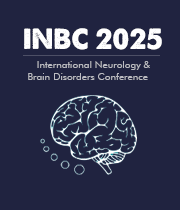Title : Effects of subthalamic deep brain stimulation on facial emotion recognition in parkinson’s disease: A comprehensive literature review
Abstract:
Background: Subthalamic Nucleus (STN) Deep Brain Stimulation (DBS) is a well-established intervention for alleviating motor symptoms in Parkinson’s Disease (PD), including tremor, rigidity, and bradykinesia. However, emerging research points to significant nonmotor side effects, particularly impairments in Facial Emotion Recognition (FER). Given the STN’s involvement in motor, cognitive, and emotional neural circuits, understanding the impact of DBS on FER is essential for comprehensive outcome assessment and individualized treatment planning.
Methods: A systematic literature review was conducted following PRISMA guidelines, covering studies indexed in MEDLINE and Cochrane databases from 1980 to 2025. Of 295 initially identified articles, 234 remained after removing duplicates. Title and abstract screening reduced this number to 42, and after full-text evaluation, 21 studies met the inclusion criteria. Two were excluded due to insufficient FER data, resulting in 19 studies for final analysis. Key data extracted included sample sizes, patient demographics, FER assessment methods, medication dosage (levodopa equivalent), DBS conditions, and reported FER outcomes.
Results: The majority of studies reported FER impairments post-DBS, especially in recognizing negative emotions such as fear, sadness, and anger. Some also noted difficulties in identifying disgust, although these may predate DBS. Differences in findings likely reflect variability in methodology, patient populations, and DBS parameters. These FER changes are thought to stem from DBS-induced disruptions in emotional processing networks, particularly altered connectivity among the STN, limbic basal ganglia loops, and prefrontal cortex.
Conclusion: Overall, STN DBS appears to influence emotional processing in PD, underscoring its integrative role across motor, cognitive, and affective domains. Implementing standardized FER evaluations and optimizing DBS settings may help mitigate these nonmotor side effects, ultimately enhancing patient quality of life.



